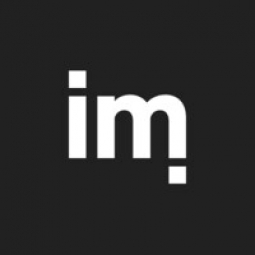Technology Category
- Application Infrastructure & Middleware - Database Management & Storage
- Infrastructure as a Service (IaaS) - Cloud Databases
Applicable Industries
- Electronics
- National Security & Defense
Applicable Functions
- Quality Assurance
Use Cases
- Inventory Management
- Time Sensitive Networking
Services
- Cybersecurity Services
- System Integration
About The Customer
The customer is one of the largest computer technology companies in the world, operating in a price-competitive industry with razor-thin margins. The company has over 100,000 employees who develop, manufacture, and service the company’s products worldwide. The company was using IBM Guardium to secure their databases, but the high cost of ownership and operational inefficiencies were proving to be a major hurdle. The company was unable to expand their IBM Guardium deployment beyond the 500 databases it covered due to the overwhelming amount of labor required. This left some critical databases unmonitored, introducing compliance and security risks.
The Challenge
A global computer technology company was facing significant challenges in meeting the criteria for various regulations including the Sarbanes–Oxley Act (SOX), Payment Card Industry Data Security Standard (PCI-DSS), and Statement on Auditing Standards No. 70 (SAS 70). The company was using IBM Guardium to secure their databases, but the high cost of ownership and operational inefficiencies were proving to be a major hurdle. The company was unable to expand their IBM Guardium deployment beyond the 500 databases it covered due to the overwhelming amount of labor required. This left some critical databases unmonitored, introducing compliance and security risks. The high labor cost was mainly due to Guardium’s architecture deficiencies, which required a large number of virtual appliances to cover the company’s 500 databases. The volume of virtual appliances made the deployment complicated and costly to operate. Furthermore, Guardium’s integration with the company’s Remedy change ticketing and workflow system was cumbersome, and presented many challenges.
The Solution
The company decided to replace IBM Guardium with Imperva SecureSphere Data Security Suite, to achieve higher levels of compliance and save $1.9M in yearly operational costs. SecureSphere was able to monitor 1,050 of the company's databases with just 65 virtual appliances, a significant reduction from the 135 virtual appliances required by Guardium. This reduction in virtual appliances translated into half as much database auditing infrastructure for the company to manage. Furthermore, with SecureSphere, the company was able to convert a primarily manual change ticketing process into a streamlined automated workflow, by integrating with their Remedy ticketing system. The switch to SecureSphere was completed in just 60 days for the 500 databases that Guardium had been monitoring. Following the success of the initial deployment, the company decided to expand the SecureSphere roll out to a total of 1,050 databases.
Operational Impact
Quantitative Benefit

Case Study missing?
Start adding your own!
Register with your work email and create a new case study profile for your business.
Related Case Studies.

Case Study
Remote Temperature Monitoring of Perishable Goods Saves Money
RMONI was facing temperature monitoring challenges in a cold chain business. A cold chain must be established and maintained to ensure goods have been properly refrigerated during every step of the process, making temperature monitoring a critical business function. Manual registration practice can be very costly, labor intensive and prone to mistakes.

Case Study
Cloud Solution for Energy Management Platform-Schneider Electric
Schneider Electric required a cloud solution for its energy management platform to manage high computational operations, which were essential for catering to client requirements. As the business involves storage and analysis of huge amounts of data, the company also needed a convenient and scalable storage solution to facilitate operations efficiently.

Case Study
Leveraging the IoT to Gain a Competitive Edge in International Competition
Many large manufacturers in and outside Japan are competing for larger market share in the same space, expecting a growing demand for projectors in the areas of entertainment, which requires glamor and strong visual performance as well as digital signage that can attract people’s attention. “It is becoming more and more difficult to differentiate ourselves with stand-alone hardware products,” says Kazuyuki Kitagawa, Director of Service & Support at Panasonic AVC Networks. “In order for Panasonic to grow market share and overall business, it is essential for us to develop solutions that deliver significant added value.” Panasonic believes projection failure and quality deterioration should never happen. This is what and has driven them to make their projectors IoT-enabled. More specifically, Panasonic has developed a system that collects data from projectors, visualizes detailed operational statuses, and predicts issues and address them before failure occurs. Their projectors are embedded with a variety of sensors that measure power supply, voltage, video input/ output signals, intake/exhaust air temperatures, cooling fan operations, and light bulb operating time. These sensors have been used to make the projector more intelligent, automatically suspending operation when the temperature rises excessively, and automatically switching light bulbs. Although this was a great first step, Panasonic projectors were still not equipped with any capability to send the data over a network.






